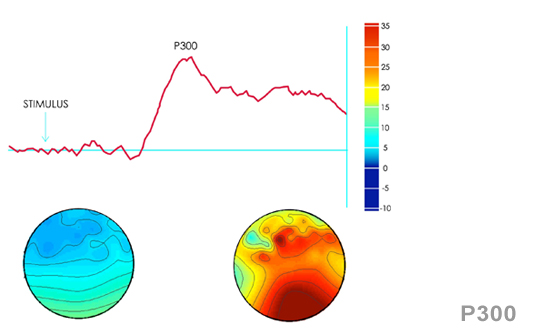 |
Dr. A.K. Pradeep
Dr. Pradeep founded NeuroFocus in 2006. The company now ranks as the world leader in the neuromarketing field.
Read the full biography here. |
The “Aha!” Moment: Why One Letter and Three Numbers
Are Critical To Marketing Success
By Dr. A.K. Pradeep - 6 October, 2009
Neuroscientists call it the “aha!” moment.
If you’re a brand marketer, a retailer, an entertainment company, an ad agency, or anyone else who markets goods and services and content to consumers, that one-third of a second is the most important time frame in your world. By far.
Why? Because the P300, as it’s called, represents the human brain’s instant but subconscious recognition of something it regards as worthy of its attention. Something it recognizes as interesting, emotionally engaging…something worth responding to, and remembering.
Could you benefit from knowing how customers perceive new product features? Would it help your brand positioning and marketing to be able to identify, with precision, the core attributes that consumers associate most positively with your brand? How about understanding more accurately than ever before possible the impact that packaging has at the point of sale? Or which exact price point hits the elusive ‘sweet spot’ where purchase intent is most stimulated?
That’s the “Wow!” factor—that split second where the subconscious responds, and marketers no longer have to rely on guesswork to gauge consumers’ true reactions.
 |
That’s the “Wow!” factor—that split second where the subconscious responds, and marketers no longer have to rely on guesswork to gauge consumers’ true reactions. |
 |
And why is that so critically important? Because neuroscience teaches us that the subconscious level of the brain is where essential perceptions are registered and decisions are made. It is at this precognitive level of the mind where initial product interest, purchase or viewing intent, and brand loyalty are formed.
In other words, it is the most important place for your marketing messages, your package design, your program promo, your retail environment, your product’s taste, feel, or function, your brand’s image and attributes to make a strong, positive, engaging, and memorable impression.
If and when they do, the brain produces a P300.
What exactly is the P300? It’s a waveform. A visual depiction of the brain’s response to a stimulus. The unique signature that a brainwave makes when something triggers the subconscious mind’s attention and recognition or association. It looks like this:

What makes the measurement of the P300 so valuable to marketers? Because by being able to capture that brainwave signature, one can determine exactly when and how consumers respond to stimuli. Neuroscience can tell precisely when their brains register that all-important “aha!” instant, when their subconscious responds and forms that critical series of impressions and decisions which drive behavior.
Burgers and Brain Cells
Here’s a specific example. Let’s say you’re a quick service restaurant company and you want to discover exactly how consumers respond to your brand—what specific attributes they associate with it, at the deep subconscious level of the brain, which is where these attributes are registered and remembered.
Neuroscience has a proven way to do this: Deep Subconscious Response Testing. And here, in a simplified explanation, is how it works.
A series of words or short phrases that the company wants to test for—the attributes—are identified. Let’s say they’re:
- value
- appetizing
- rewarding
Those words are displayed on a screen in extremely brief exposures of less than a second. Precise measurements of the brain’s subconscious response to those words are recorded, providing a ‘baseline’ of the test subject’s particular neurological reactions to them. That baseline is a P300.
Next the test subject is shown an image of the brand. (A logo or other visual representation). Then the display of the words on screen is repeated, and once again the test subject’s neurological response is recorded, producing a second P300.
Matching the two P300 ‘signatures’ against each other reveals if there’s been a measurable rise in the subject’s subconscious response from the first to the second exposure. If so, that demonstrates that they are associating that attribute with the brand. Science says there is no other variable involved—we know with certainty that the test subject subconsciously connects “value”, or “appetizing”, or “rewarding” with the brand.
Surveys and focus groups strive to ascertain the same connection, but they’re limited by the basic structure and function of the human brain. Neuroscience teaches that the brain, when asked to express what someone thinks or feels or remembers about something, actually changes the original information it recorded as it develops its response to the question.
In addition, articulated responses like these are subject to a variety of influences (hence the need for relatively large sample sizes to try to overcome this). These influences can include everything from language and educational differences to ethnic, cultural, and other factors.
Deep Subconscious Response Testing measures at the stage of the cognitive process before those influences have any effect. It captures the original data recorded by the brain, almost instantaneously as it is being registered and reacted to in the subconscious.
The P300 is the ultimate marker for market research purposes. Gain that marvelous “aha!” moment from the brain, and you know your brand/product/message/retail environment are registering right where it matters the most: the deep subconscious level of the mind.

Dr. A.K. Pradeep
Comments on this article

Want to share your thoughts...?
NOTE: Please note that this board is moderated, and comments are published at the discretion of the site owner.
|